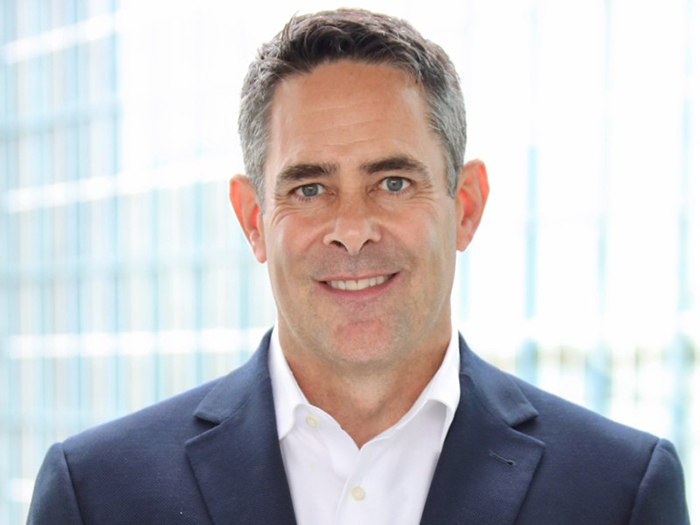How a Tech Approach Can Put Predictive Workers’ Comp Analysis in the Hands of Small Businesses

The term Insurtech — referring to any number of insurance carriers and service providers serving the market through technology-based solutions — has been around since the 2010s. But only now has a new breed of Insurtech emerged to fill the most elusive knowledge gaps for underwriters and claims handlers.
For workers’ compensation, it’s severity prediction that remains the most difficult area to predict.
According to a Grand View Research market report, “the global Insurtech market size was valued at $3.85 billion in 2021 and is expected to expand at a compound annual growth rate of 51.7% from 2022 to 2030.”
The observers account for this powerful growth by citing the increase of global insurance claims generally, a key part of a modernizing and mature economic picture.
“The next generation of Insurtechs will definitely be more focused on the bottom line and more attentive to how they can improve insurance as a business in terms of profitability and margins, and most importantly, how they can outperform incumbent and legacy carriers in terms of claims mitigation,” David Fontain, CEO, Foresight.
Fontain’s company works in tandem with a tech-based safety application and “safety coaches” to serve the middle market of workers’ compensation.
“Everyone knows that insurance companies make money by mitigating and reducing claims, and I believe that this next generation of Insurtechs will have more efficiency in their claims model,” he continued.
Relevance in a crowded space is a constant in the tech industry writ large, not just for Insurtechs, but as “Insurtech 2.0” gains steam, these firms’ ability to demonstrate value through truly unique additions to a carrier’s or insured’s risk profile and risk management strategy drives the competition.
“As we’ve seen the industry transform from this idea of Insurtech 1.0 to Insurtech 2.0, the use of tech-based predictive analytics to review previous claims for similarities and automate alerts to claims specialists has grown exponentially,” explained Dimitrius King, Pie Insurance‘s chief claims officer.
“For our client base in particular — small businesses — these customers rely on us to incorporate accurate prediction of loss, as well as customer acquisition cost and retention rates, into what we’re providing. And we’re able to deliver on this through a foundation built on technology and analytics.”
Analytics’ Home in Insurtech
Analytics in and of itself isn’t new, it now dominates the landscape, but tailoring analytics remains a major priority.
“We look to digitize and create a system around OSHA compliance and safety engagement,” Fontain said of Foresight’s model, referencing the Safesite tech the company uses to ensure compliance.
“In the industries that we cover, we’re talking about the core industries across the country of manufacturing, construction and agriculture. A common theme across these industries apart from powering the nation is that safety compliance is critical.”
For King’s part, he believes the value that Insurtechs bring isn’t simply the technology itself, but also its integration within core processes.
“One of the major differentiators for Insurtechs is that for many organizations, such as Pie, predictive analytics has been integrated into our systems since inception,” he explained. “Additionally, utilizing predictive analytics allows the adjusting staff to tailor the claims experience to ensure they are moving the claim forward for the best possible outcome.”
Regarding the more slippery aspects of analytics and prediction, it comes down to severity in the oft-discussed drive to zero accidents.
“Frequency is one thing we feel we’ve really mastered at mitigating — it’s no new discovery that increasing engagement in a safety and compliance program directly influences frequency,” said Fontain.
“What is still elusive is severity. I’m talking about high severity claims and fatalities. There’s a correlation in lowering frequency in that it tends to lower severity, but they still occur and it’s the extent of those severity cases that remains elusive. It’s unfortunate but people are still killed in the workplace everyday.”
To that end, there are some bright spots in the Bureau of Labor Statistics (BLS) most recent data from 2020, though some concerning new developments have arisen. Key findings from the BLS 2020 Census of Fatal Occupational Injuries included the official tally of fatal accidents — 4,764 fatal occupational injuries in 2020 representing the lowest annual number since 2013 — or one worker death every 111 minutes.
Unfortunately, the share of Hispanic or Latinx workers fatally injured on the job continues to grow, increasing to 22.5% (1,072 fatalities) from 20.4% (1,088 fatalities) in 2019. Hispanic or Latinx are overrepresented in high-risk industries including agriculture and construction.
“There’s a reason that these industries are the most important for safety and compliance, because the nature of the work carries more risk, and most of that risk can be mitigated, 99%. The one percent is still those unfortunate circumstances where there’s a critical failure, and it can result in serious injury or loss of life. How do you prevent those fatalities entirely? We endeavor to work toward that through technology,” explained Fontain.
Aside from the severity part of new claims mitigation techniques generated via Insurtechs’ innovation, King noted the feared unknown comp claims can also be reduced through technology that continues to enjoy increased adoption by both employees and employers.
“Timeliness of claims submission is also a factor in mitigating loss, as pricing for future products is partly based on past claims analytics,” he said. “Introducing tech to the space allows workers to submit claims in a timely fashion to not only help with future predictions, but to bring efficient customer service to the table, at a time when an individual values the extra layer of ease and assistance.”
Why Workers’ Comp Could Be Ideal for Insurtech
Workers’ compensation is one of the few lines of insurance spared massive rate hikes over the last five years; it remains immensely profitable, with a combined ratio under 100 year over year. Given the likely flat rate future, it could indeed be Insurtechs that drive new profit models.
“We may see a move to a risk participation model, with businesses in the space that we cover,” Fontain predicted.
“I think more and more businesses are becoming more savvy and that may lead to them wanting to participate more in their risk management, so we may see more alternatives to guaranteed cost becoming more popular as they have more data at their disposal.” &












